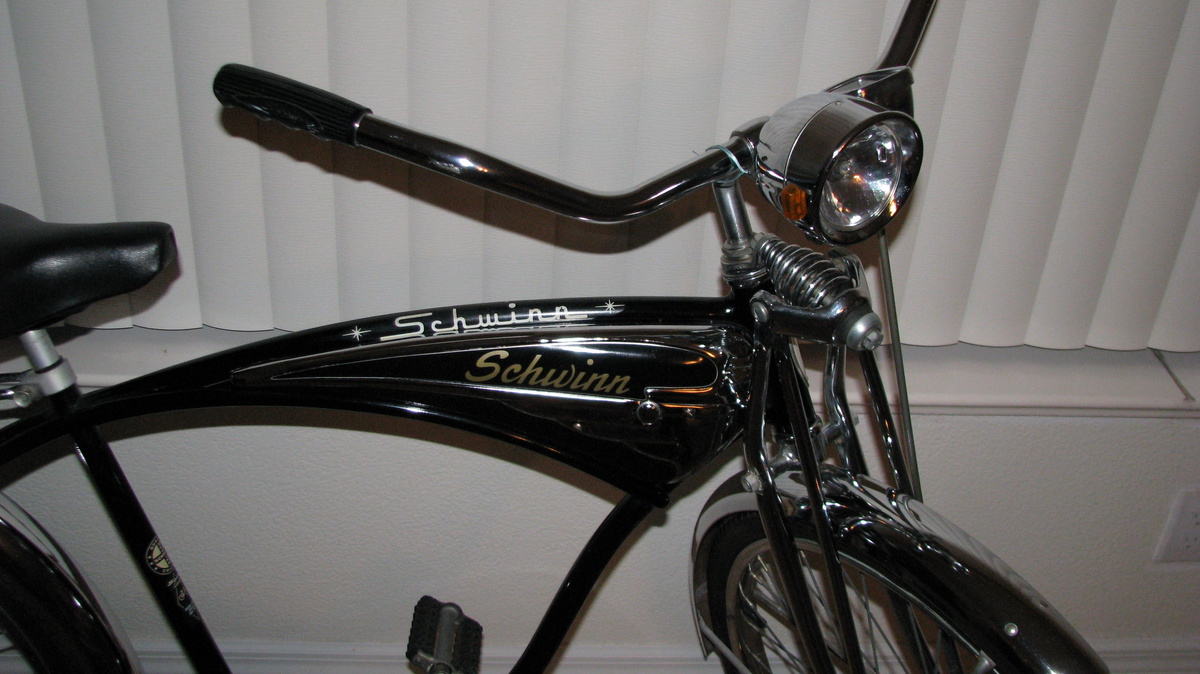
The Schwinn Paramount, Superior and New World were built by hand in a separate area of the Chicago factory called the "handbuild shop." The Paramount, with its lugged frame of Reynolds or Accles and Pollock tubing, was the top of the line. Here - with characteristic hyperbole of the age - is the opening text from Schwinn's April 1938 advertisement that announced these new bicycles: The three new models were the Paramount, the Superior, and the New World. reintroduced fine, lightweight adult bicycles to its product line. In 1938, most likely in response to European competition, Arnold, Schwinn & Co. became primarily a producer of heavy-duty juvenile bicycles. From the 1920's until 1938 Arnold, Schwinn & Co. Bicycles began to serve more as vehicles for children, which led to the development of heavier and sturdier models. In time bicycles became less expensive, but by the end of World War I automobiles had taken their place as the popular form of transportation. originally produced standard light adult models weighing 19 to 24 pounds, and priced from $100 to $150, a lot of money in those days.

At that time bicycles were a fashionable but expensive mode of transportation for adults. Custom framebuilders still provide fillet-brazed construction, and tandem framesets were often fillet-brazed when lugs to fit their frame angles were not available.Ĭross section of a fillet-brazed bicycle head tubeġ938: New Schwinn Lightweights Are AnnouncedĪrnold, Schwinn & Company was incorporated in Chicago in 1895, during the boom in bicycle sales of the 1890's.

Lugged bicycle frames, for example, are now manufactured by automated machines. (For additional strength Schwinn also brazed steel sleeves into the interior of its frame tubes at the joints.)įillet-brazed bicycle frames are strong and have a neat and clean appearance, but they are uncommon because of the additional craftsmanship required. The extra thickness of the fillet also provides strength, and its smooth contour distributes stresses evenly. In this method of bicycle frame construction, "mitering" or cutting the tube ends so that they fit together precisely is critical so that capillary action will draw the molten filler into gaps for a strong joint. Fillet brazing involves building up brass filler metal in a smooth "fillet" around joints. Fillet-brazing is an alternative method of constructing high-quality lightweight bicycle frames without the use of lugs.īrazing is a joining process employing a filler metal, like brass, that melts below the melting temperature of the parent metal workpiece. Last Updated on: Apwith Schwinn heavy duti.Until the recent rise of quality TIG-welded and composite bicycle frames, most high quality lightweight bicycles used lugs (external metal sleeve fittings) to join their frame tubing. Here is a list of all the original parts and after market parts:1 - Original Frame, Forks and chain guard with the patina Kool Lemon paint (left this on purpose)2 - All the bearing, races and cups ar. Hello CL -I just completed the restoration of my 74 Schwinn Heavy Duti paper route bike. Here is a list of all the original parts and aftermarket parts:1 - Original Frame, Forks and chain guard with the patina Kool Lemon paint (left this on purpose)2 - All the bearing, races and cups are.


Modern mountain biking that we know of today all started here. 1967 Schwinn Heavy-Duti Klunker - $500 (James Island).


 0 kommentar(er)
0 kommentar(er)
